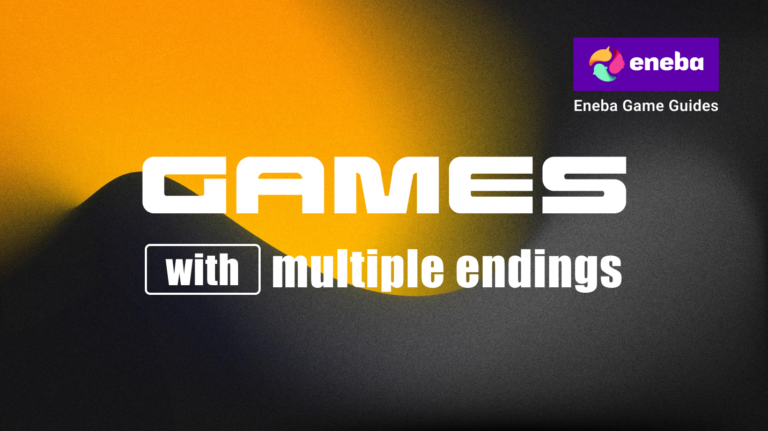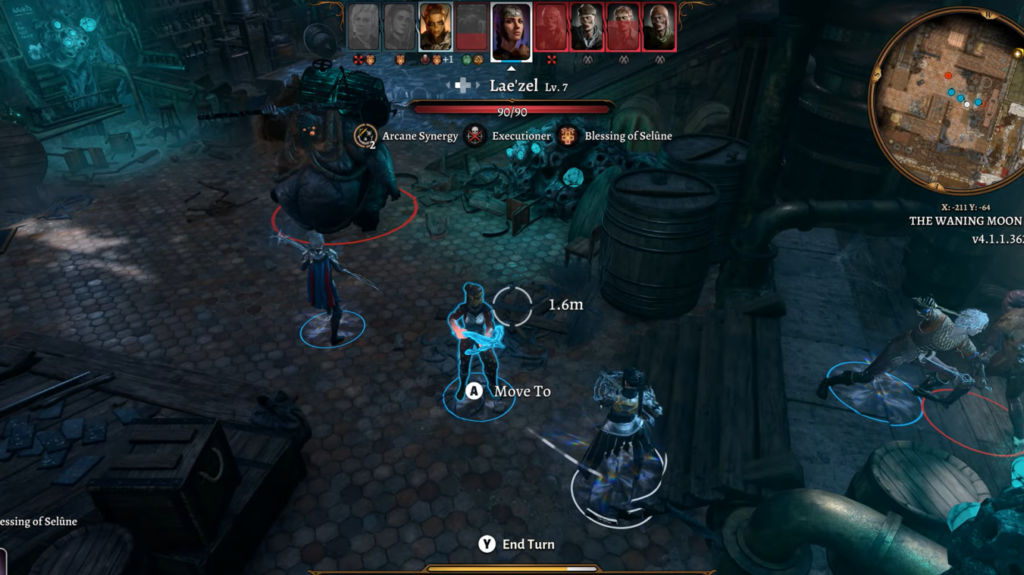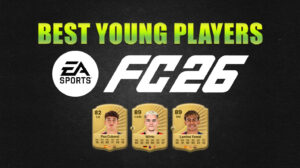5 Best Games With Multiple Endings: A Guide to Narrative Choice

Interactive narratives are everywhere, but the best games with multiple endings stand out because they reflect your decisions in a big way. When your actions and dialogue choices lead to entirely different finales, the sense of agency feels real.
I grew up playing role playing adventures where every playthrough felt the same. Modern titles such as The Witcher 3: Wild Hunt or Detroit: Become Human changed that and made me rethink how games tell stories. In this guide I’ll explore why multiple endings matter, highlight some great examples, and share useful tips for making the most of these experiences.
Jump to:
Understanding Games With Multiple Endings
At the heart of games with multiple endings is branching narrative design. Developers create different story paths that respond to your choices, from major decisions about character fates to subtle dialogue options. My first encounter with a branching narrative was in Heavy Rain, and I remember being shocked when a single missed quick‑time event changed who lived and who didn’t. That sense of consequence kept me replaying the game just to see how things could unfold. It’s no wonder, we’ve put it on our list of the best story games.
Multiple endings can range from a handful of alternate climaxes to dozens of variations. The Stanley Parable: Ultra Deluxe is a surreal exploration of choice that leads to around 25 distinct outcomes, each poking fun at the idea of free will. NieR: Automata offers 26 endings, five of which drive the main story and the rest serve as humorous or surprising epilogues that reveal more about its world. Meanwhile, The Witcher 3: Wild Hunt reportedly has 36 variations of its ending, shaped by how Geralt trains Ciri and which political allies you support. These examples illustrate how the scope of branching can differ dramatically.
The flexibility also raises design challenges. Developers must maintain coherence between different story branches and ensure that each path feels satisfying. Visual novels handle this by presenting routes focused on different characters, while open world role playing games track dozens of variables behind the scenes. Detroit: Become Human pushes this concept further with 85 possible outcomes, depending on how you guide three android protagonists. Each decision you make influences not only their personal journeys but also the social movement around them.
5 Best Games With Multiple Endings To Boost Your Creativity
Modern releases continue to refine branching narrative systems, offering players more control over how stories conclude. Here are some standout titles that showcase varied endings and memorable characters:
1. Detroit: Become Human

Set in a future Detroit where sentient androids struggle for independence, Detroit: Become Human places you in control of three androids (Connor, Kara and Markus) whose destinies intertwine.
The game boasts dozens of endings ranging from peaceful coexistence to tragic rebellion. Your choices determine whether characters survive, what kind of society emerges, and how humans view androids. When I played, I was stunned at how a single decision early on resonated hours later, leading to a radically different conclusion on my second playthrough.
2. The Witcher 3: Wild Hunt

Geralt’s journey to find Ciri is already celebrated for its storytelling, but its multiple endings elevate it further. The main narrative has three distinct conclusions – positive, neutral and tragic – depending on how you mentor Ciri.
Additional variations stem from political choices and romantic subplots. While exploring the world’s sprawling side quests, I learned that even small decisions can impact the final state of kingdoms and characters. That sense of ripple effect keeps me invested in repeated playthroughs.
3. NieR: Automata

This post‑apocalyptic action game blends fast‑paced combat with philosophical storytelling. You play as androids 2B and 9S in a war against machines, only to uncover layers of hidden meaning through multiple endings.
The first few endings actually form one cohesive story arc, but after that the game encourages experimentation. Each subsequent conclusion unlocks new perspectives on its characters and world. The humor of some endings contrasts with the seriousness of others, creating a unique tonal mix.
4. The Stanley Parable: Ultra Deluxe

An office worker named Stanley discovers a door labeled “new content,” and from there the game spirals into a meta commentary on player choice. With around two dozen endings, this title constantly subverts expectations.
I once followed every instruction from the narrator and ended up in an ending that criticized my obedience; on another run I went off the rails and found myself in a hilarious broom closet ending. It’s a great example of how multiple endings can be both clever and comedic.
5. Baldur’s Gate 3

Though known for its deep role playing mechanics, Baldur’s Gate 3 also offers numerous ending permutations. Beyond its four main conclusions, the game tracks countless variables from earlier acts – who you allied with, which party members survived, and decisions made during quests. I remember reaching the final act and seeing old allies return based on my earlier choices. It’s a testament to how choice driven design can make your adventure feel deeply personal.
Games like Detroit: Become Human and others on this list are powerful narrative adventures. If you like story-driven games where choices actually matter, this is your new playground.
Why Multiple Endings Matter to Players
When I think about why I enjoy games with multiple endings, two ideas come to mind: agency and replayability. Choice driven narratives give players the feeling that their actions truly matter. In a medium where interactive input is key, being able to shape the outcome reinforces the unique qualities of video games. Having multiple ways for a story to end means you can approach characters from different moral perspectives, and see how the world responds.
Replayability is another major advantage. Knowing there are alternate climaxes encourages you to revisit the game, try new strategies and explore hidden content. In my own playthroughs of Cyberpunk 2077 and Fallout: New Vegas, I found that choosing different endings made me appreciate side stories and character arcs that I missed before. For completionists, collecting all endings becomes a rewarding challenge. However, it’s important to note that some players prefer a single definitive narrative; multiple endings can sometimes dilute the sense of closure if not handled carefully.
Branching endings also allow developers to comment on themes. In Undertale, your decisions to spare or fight enemies lead to radically different outcomes and messages about violence and compassion. Visual novels like Steins;Gate explore cause and effect by letting you alter timelines and witness the consequences. These games prompt reflection on morality and the value of choice in our own lives.
Our overview of games like Until Dawn dives deeper into how horror titles use branching paths to amplify tension. By exploring those examples, you’ll see how choice and consequence can make even familiar scares feel fresh.
Tips for Enjoying Games With Multiple Endings
If you’re new to games with multiple endings, here are a few strategies to get the most out of them:
- Play blind on your first run. Resist the urge to look up guides. The surprise of seeing how your choices affect the story makes the experience memorable.
- Use save files wisely. Some titles allow you to create manual saves before critical choices. Keeping separate files lets you explore alternate outcomes without replaying the entire game.
- Focus on role playing. Make decisions based on how you think the character would act rather than what seems optimal. This often leads to more authentic and surprising endings.
- Take breaks between playthroughs. After finishing one ending, give yourself time before diving back in. This prevents fatigue and keeps each run feeling fresh.
- Discuss your experiences. Sharing your endings with friends or online communities can reveal paths you didn’t notice and enrich your understanding of the story.
It’s worth noting that not every branch will dramatically change the ending; some may only tweak certain scenes or dialogue. Approach each playthrough with curiosity rather than an expectation of a completely different game. And if you’re unsure where to start, our guide to the best games like The Quarry can help you find titles that match your preferred genre, whether horror, sci‑fi or fantasy.
Future of Multiple Ending Games
Looking ahead, storytelling in video games is poised to become even more dynamic. Procedural generation and artificial intelligence are enabling narratives that adapt in real time, potentially creating unique endings for each player. Developers are also experimenting with community driven choices, where the collective decisions of a player base influence future content. We’ve already seen indie experiments like As Dusk Falls and Pentiment push interactive storytelling in new directions, blending narrative choices with stylized art and historical settings.
As technology evolves, we can expect branching narratives to integrate deeper with gameplay systems. Imagine a strategy game where political alliances shape the ending or a racing title where your career decisions determine your legacy. The possibilities are vast, and I’m excited to see how designers continue to blur the line between gameplay and narrative. With more studios embracing choice, games with multiple endings are likely to remain a defining feature of interactive media.
Wrapping Up: The Impact of Multiple Endings on Gaming
Games that offer more than one conclusion give us a taste of true agency. They allow us to experiment, reflect and connect with stories in a personal way. Whether you’re navigating a dystopian city in Detroit: Become Human, wandering the Continent as Geralt in The Witcher 3, or pondering meta questions in The Stanley Parable, the knowledge that your actions matter adds weight to every decision. Multiple endings can make a game feel alive and ensure it stays in your thoughts long after you put down the controller.
If you want to experience one of the most ambitious narrative adventures available today, grab your Detroit: Become Human Steam key from the Eneba store. This key unlocks a story where every action counts and where replaying for different outcomes is part of the thrill. It’s a great starting point if you’re curious about branching narratives and want a game that rewards your curiosity.
FAQs
What game has the most multiple endings?
The game with the most multiple endings is often cited as Detroit: Become Human, which has dozens of distinct conclusions depending on your choices. Some classic visual novels like Star Ocean: The Second Story also feature a very high number of permutations, but mainstream players commonly point to Detroit: Become Human when discussing extreme branching.
What is a game with multiple endings called?
A game with multiple endings is usually called a choice driven or branching narrative game because it allows players to shape the story through their decisions. These titles often fall under genres like visual novels, interactive movies or role playing games, but the defining feature is the presence of different conclusions.
What is the game with 100 endings?
The game with one hundred endings is Star Ocean: The Second Story, an action role playing title that tracks character relationships to produce a vast array of final scenes. Each combination of character bonds leads to a different ending, making it a favorite among completionists who enjoy seeing every possible outcome.
Should games have multiple endings?
Yes, games should have multiple endings if the design supports meaningful choices and replayability. Providing alternate outcomes gives players a reason to revisit the story and can make their actions feel more impactful, though it’s important for developers to ensure that each ending feels satisfying and coherent.
How many endings does Detroit: Become Human have?
Detroit: Become Human has around eighty five endings when you account for all the variations and character fates. While many of these endings share themes, each one reflects the specific decisions you made throughout the game, making repeated playthroughs rewarding.
















